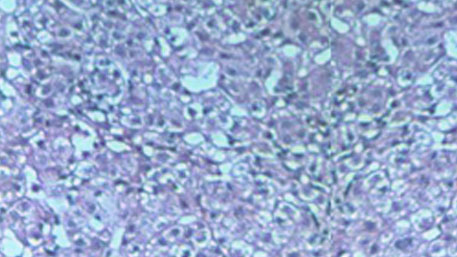 Spotlight
Spotlight
Microbiome-based therapeutics
(Posted Apr 21, 2024 8AM)
Adherence to the Mediterranean diet can beneficially affect the gut microbiota composition: a systematic review
(Posted Apr 19, 2024 10AM)
Dynamic SARS-CoV-2 surveillance model combining seroprevalence and wastewater concentrations for post-vaccine disease burden estimates
RH Holm et al, Comm Med, April 9, 2024 (Posted Apr 10, 2024 8AM)
Genomics reveals heterogeneous Plasmodium falciparum transmission and selection signals in Zambia.
Abebe A Fola et al. Commun Med (Lond) 2024 4 (1) 67 (Posted Apr 10, 2024 8AM)
 Latest News and Publications
Latest News and Publications
Silvia Ricci et al. J Allergy Clin Immunol Pract 2024
External quality assessments for SARS-CoV-2 genome detection in Austria : A comparison of the first postpandemic round with results from the pandemic era.
Buchta Christoph, et al. Wiener klinische Wochenschrift 2024 0 0.
Generalizing the application of machine learning predictive models across different populations: does a model to predict the use of renal replacement therapy in critically ill COVID-19 patients apply to general intensive care unit patients?
França Allan Rodrigo Murrieta, et al. Critical care science 2024 0 0. e20240285en
Genomic surveillance of SARS-CoV-2 in North Africa: 4 years of GISAID data sharing.
Hamzaoui Zaineb, et al. IJID regions 2024 0 0. 100356
Current Progress, Challenges and Prospects in the Development of COVID-19 Vaccines.
Zhu Congrui, et al. Drugs 2024 0 0.
Emergence of SARS-CoV-2 Omicron sub-lineage JN.1 in Bangladesh.
Jony Manjur Hossain Khan, et al. Microbiology resource announcements 2024 0 0. e0013024
Genomic epidemiology of SARS-CoV-2 δ sublineages of the second wave of 2021 in Antioquia, Colombia.
Velarde Cristian Arbey, et al. Biomedica : revista del Instituto Nacional de Salud 2024 0 0. (1) 54-66
The gut microbiome associates with phenotypic manifestations of post-acute COVID-19 syndrome
Su Q, et al. Cell Host Microbe, Apr 23, 2024.
A comprehensive benchmark for COVID-19 predictive modeling using electronic health records in intensive care.
Junyi Gao et al. Patterns (N Y) 2024 5(4) 100951
Identifying dementia from cognitive footprints in hospital records among Chinese older adults: a machine-learning study.
Jiayi Zhou et al. Lancet Reg Health West Pac 2024 46101060
More
Content Summary
Common Type
Disclaimer: Articles listed in the Public Health Knowledge Base are selected by Public Health Genomics Branch to provide current awareness of the literature and news. Inclusion in the update does not necessarily represent the views of the Centers for Disease Control and Prevention nor does it imply endorsement of the article's methods or findings. CDC and DHHS assume no responsibility for the factual accuracy of the items presented. The selection, omission, or content of items does not imply any endorsement or other position taken by CDC or DHHS. Opinion, findings and conclusions expressed by the original authors of items included in the update, or persons quoted therein, are strictly their own and are in no way meant to represent the opinion or views of CDC or DHHS. References to publications, news sources, and non-CDC Websites are provided solely for informational purposes and do not imply endorsement by CDC or DHHS.



